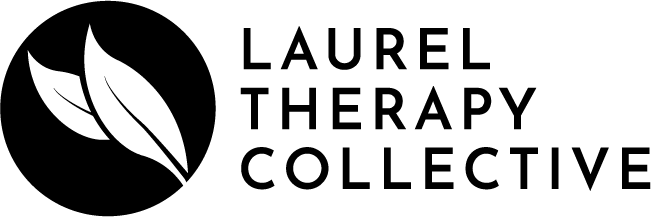Proven Kinds Of Therapy: What They Are And When They’re Helpful
Evidence-based practices (EBPs) are essential foundations in therapy. They're supported by research and clinical experience. Your therapist should have received basic training in most of these modalities in graduate school. But that doesn't mean they actively use them. It also doesn't mean they're guaranteed to work for you. Here's a brief explanation of different types of therapy and alternatives to consider if the EBP doesn't work for you.
Please note that some modalities, including EMDR, require intensive specialized training.
Cognitive-Behavioral Therapy (CBT)
What Does Cognitive Behavioral Therapy Actually Look Like?
Cognitive Behavioral Therapy involves systematically looking at your thoughts and behaviors. The theory is that by changing one part of your experience, you change the other. If you change your behavior, your thoughts will change with it, and vice versa. Emphasis is put on challenging maladaptive thoughts and cognitive distortions.
Strengths of CBT:
Structured Approach. CBT provides a clear and structured framework, making it accessible for both therapists and clients. It focuses on thoughts and behavior and how they shape our mental health.
Evidence-Based Success. Extensively researched, CBT has demonstrated efficacy in treating various mental health conditions, making it a go-to approach for many practitioners.
Skill-Building. Emphasizing practical skills, CBT equips people with tools to manage and challenge negative thought patterns.
Limitations of CBT:
Focused on the Present. While effective for current issues, CBT may not delve into past traumas or address root causes for some people.
Doesn't Incorporate The Mind-Body Connection. The body of research around the mind-body connection is exploding lately. The body is highly involved in trauma storage and triggering. Traditional CBT leaves out connection to the body.
Requires Active Participation and Followthrough. Success in CBT often relies on the client's active engagement and willingness to apply learned skills outside of therapy. This sometimes includes homework and other skill development.
Does CBT Work Through Online Therapy or Teletherapy?
CBT has proven highly effective in teletherapy. The structured nature of CBT integrates well with virtual sessions, allowing individuals to engage in transformative mental health interventions remotely through teletherapy platforms.
Alternatives to Cognitive Behavioral Therapy
Holistic Therapy. Holistic therapy may sometimes incorporate elements of CBT, but may also include somatic and psychodynamic approaches. It also considers the impact of physical health, relationships, and values on mental health.
Psychodynamic of Therapy. Psychodynamic therapy explores the past's influence on the present and how key relationships influence our wellbeing.
Acceptance and Commitment Therapy (ACT). Blending mindfulness with value-based living, ACT encourages acceptance of difficult thoughts and emotions.
Somatic Therapy. For those who feel a strong physical activation around trauma and emotion, Somatic Therapy may be an excellent fit.
Schema Therapy. Tackling deeply rooted patterns, schema therapy combines cognitive, behavioral, and experiential techniques.
Dialectical Behavior Therapy (DBT)
Developed by Marsha Linehan, DBT is the frontline treatment for many pervasive conditions. DBT was originally developed for people with borderline personality disorder. It is considered the gold standard in helping people with BPD "build a life worth living." It is also helpful for people who find it difficult to regulate emotions, people with eating disorders, and people with trauma. The core principle of DBT is this: everyone is doing the best they can, and they can do better. Embracing dialectics, or things that seem to conflict with each other but don't, helps people who struggle with extremes and black and white thinking. DBT pairs compassion and validation with concrete skills and structure for greatest impact.
What Does Dialectical Behavior Therapy Actually Look Like?
Authentic DBT is quite intensive. It involves:
Weekly individual therapy by a DBT-trained therapist
Access to a DBT therapist via phone 24/7 to help with skills implementation
Weekly skills-building group participation. This skills course includes 9-12 months of study and practice in the following modules:
Mindfulness
Distress Tolerance
Emotion Regulation
Interpersonal Effectiveness
If we're honest, we wish DBT skills were taught from kindergarten through high school. Imagine a society where everyone was given the skills to regulate emotions and tolerate distress from a young age! We'd have better relationships, jobs, and mental health.
Strengths of DBT
Mindfulness. DBT's incorporation of mindfulness practices enhances emotional regulation and self-awareness.
Concrete Skill Set. DBT offers a broad range of skills, from distress tolerance to interpersonal effectiveness. This approach is quite effective for people with pervasive distress and difficulty coping.
Validation-Centered. The emphasis on validating an individual's experiences fosters a strong therapeutic alliance. It also acknowledges people's suffering and pain, making them feel seen and understood. At the same time, it challenges people to try new things in response to their pain.
Limitations of DBT:
Difficult to Access. True DBT, including 24/7 phone access to a therapist, is difficult to access through insurance. It's costly to access privately. And it's also a huge time commitment.
Intensive Commitment. DBT typically involves a substantial time commitment, including individual and group sessions, which may be challenging for some people.
Difficult To Change Ingrained Behaviors. People who struggle to emotionally regulate or tolerate distress may find it quite challenging to try new ways of responding. They might feel high levels of frustration or discomfort.
Does DBT Work Via Teletherapy?
DBT is exceptionally adaptable to teletherapy. The emphasis on skill-building, emotional regulation, and interpersonal effectiveness remains impactful through virtual sessions, making teletherapy a conducive environment for personal growth and resilience.
Alternatives to DBT
Radically Open Dialectical Behavior Therapy (RO-DBT). Specifically designed for overcontrolled individuals, RO-DBT focuses on emotional expression and openness.
Mindfulness-Based Cognitive Therapy (MBCT). Blending CBT with mindfulness, MBCT is effective for preventing the recurrence of depressive episodes.
Eye Movement Desensitization and Reprocessing (EMDR)
Developed by Francine Shapiro, EMDR is a rapidly growing trauma treatment. It utilizes bilateral stimulation with resourcing and elements of exposure therapy in a structured and customized way. When EMDR is successful, you can think about upsetting things that happened without feeling so uncomfortable. Bad things that happened will never be okay, but you can feel okay even though they happened.
What Does EMDR Actually Look Like?
EMDR is an 8 phase process. The bilateral stimulation gets a lot of attention, but only three of the phases use it. First, your therapist takes a thorough history and helps resource you for trauma processing. Then, you collaborate on picking a memory to target, and then engage in the bilateral desensitization process. Sometimes it goes quickly, and sometimes it takes time.
There are several ways to do bilateral stimulation. You can use eye movements, alternating tones, vibrations, or self-tapping side to side. If you pursue EMDR therapy, your therapist will help determine which style is best. You can read more about EMDR styles here.
Strengths Of EMDR Therapy
Targeted Trauma Processing. EMDR therapy excels in addressing and processing traumatic memories through guided eye movements.
Somatic Integration. We mentioned before the CBT leaves out the physical element of our experiences. EMDR, by contrast, is fabulous at integrating somatic experiences into processing.
Efficiency. EMDR therapy often achieves results in a shorter timeframe compared to other therapeutic approaches. Be cautious of thinking of it as a quick fix, though. Sometimes EMDR still takes a lot of time. It's just generally faster than other modalities.
Adaptability. EMDR therapy can be applied to various mental health conditions beyond trauma, such as anxiety and phobias.
Limitations of EMDR Therapy
Requires a Highly Trained EMDR Therapist. EMDR requires specialized training, limiting its accessibility. There are also many things that can impact the effectiveness of EMDR therapy. See our article here on 10 Reasons EMDR Doesn't Work.
Requires Ability To Tolerate Discomfort. In order to process a trauma, you have to fully access it in your mind. This can be highly uncomfortable. It's not uncommon for people to get flooded or dissociate in response. If that happens, a good EMDR therapist should help teach you skills and techniques to stay present and self-soothe.
Subjective Experience. Effectiveness can vary, and the subjective nature of the experience may not resonate with everyone. Some people find the bilateral part pretty weird. And that's fair - it definitely looks and feels weird! We'd be skeptical about it too if the research supporting it wasn't so strong.
Does EMDR Work Via Teletherapy?
EMDR successfully translates to teletherapy. The bilateral stimulation techniques integral to EMDR can be effectively employed through online platforms, empowering people to process and manage trauma within the context of teletherapy.
Alternatives to EMDR Therapy
Trauma-Focused Cognitive-Behavioral Therapy (TF-CBT). Integrating cognitive-behavioral techniques, TF-CBT is tailored for individuals, especially children, who have experienced trauma. It is a structured approach that some people find less intense.
Narrative Exposure Therapy (NET). A storytelling approach, NET aids in processing traumatic memories, especially in refugee populations.
Brainspotting. Brainspotting shares some similar traits with EMDR, but looks and feels different. Some people prefer it to EMDR.
Expressive Arts Therapy. While large-sample and longitudinal research on expressive arts therapy still needs to be done, small study and anecdotal support for it is good. If you're a creative person, it might be a good avenue to true.
Exposure and Response Prevention (ERP)
What Does ERP Actually Look Like?
ERP is exactly what it sounds like: exposing yourself to something upsetting and preventing yourself from responding the way you usually would. For example, someone with an OCD germ phobia might touch something dirty and then prevent themselves from washing their hands. This is adapted and customized by each therapist to suit your needs.
Strengths of ERP
Directly Targets Anxiety. ERP focuses on confronting and managing anxiety by exposing individuals to feared situations.
Highly Effective for OCD. ERP is considered the gold standard for treating obsessive-compulsive disorder (OCD).
Encourages Adaptation. By resisting compulsions, individuals learn to adapt to anxiety, fostering long-term resilience.
Limitations of ERP
Intensive and Uncomfortable. Engaging in exposure can be emotionally challenging and uncomfortable. It requires significant commitment and dedication.
Not Universally Suitable. While highly effective for anxiety disorders and OCD, ERP might not be the ideal choice for individuals with certain trauma-related conditions. It might also be especially difficult for people who struggle to self-soothe.
Requires Trained and Experienced Therapist. Your therapist should have specialized training and experience with ERP.
High Dropout Rate. Because ERP can be so uncomfortable, many people drop out of treatment and are afraid to return.
Does ERP Work Via Teletherapy?
ERP can be efficiently conducted via teletherapy. In fact, ERP can be done more broadly via teletherapy by engaging people with real-time exposures out in the world, rather than being confined to the therapy room. The structured exposure exercises and response prevention strategies seamlessly transition to remote sessions, providing individuals with the tools to confront and manage OCD symptoms through teletherapy.
Alternatives to ERP
Cognitive-Behavioral Therapy (CBT)*. CBT, particularly when tailored to address specific fears, can be an alternative for those who find ERP too intense.
Acceptance and Commitment Therapy (ACT)*. Emphasizing the acceptance of uncomfortable feelings, ACT provides a more flexible approach to managing anxiety.
* If you have OCD or a phobia, it's important to try ERP before exploring alternatives. If ERP is too intense for you, ask your therapist to work on mindfulness and other resourcing techniques to better prepare you for ERP.
Gottman Method Couples Therapy
Developed at the university of Michigan by Drs. John and Julie Gottman, this approach to treating relationship issues in couples is one of two backed by science.
What Does Gottman Method Couples Therapy Actually Look Like?
Gottman Method Couples Therapy starts with a complete assessment of your relationship, including strengths. Your Gottman therapist walks through a ten minute argument with you and your partner and helps you deconstruct it. Your therapist checks to see which of the Four Horsemen Of The Relationship Apocalypse are present, and helps you implement the antidotes. All levels of the Sound Relationship House are explored and areas for work are addressed.
Read more about our Gottman Method Couples Therapy offerings here.
Strengths Of Gottman Method Couples Therapy
Structured Approach. Particularly with couples therapy, you don't want a therapist who is just trying things to see what works. You want someone with a specific plan and approach to address problems. Gottman offers exactly that.
Good For Couples With Lots of Conflict. The structure and direction from the therapist help ensure fights and arguments don't break out in therapy. Specific skills and responses are taught, practiced, and reinforced.
Holds Both Parties Responsible For Change. Gottman therapists don't pick a side. They warmly challenge both partners to examine their role in conflict and disconnect.
Positions Therapist As Neutral Expert. Therapist neutrality is key for effective couples therapy.
Limitations of Gottman Method Couples Therapy
Cannot Address Individual Problems. If one partner has a mental health or personal problem that is impacting the relationship, couples therapy is limited in how much it can facilitate change.
Requires Both Partners To Be Invested. If only one partner wants to participate in couples therapy, it's unlikely to work.
Requires Therapist With Specialized Training. In order to properly implement Gottman therapy, a therapist must go through extensive training. This makes it more difficult to find someone who does it.
Does Gottman Method Couples Therapy Work Via Teletherapy?
The Gottman Method thrives in teletherapy settings. Couples can actively participate in personalized teletherapy sessions, addressing relationship dynamics and implementing strategies for positive change within the comfort and privacy of their own space. Teletherapy ensures that the Gottman Method extends its effectiveness to couples virtually.
Alternatives To Gottman Method Couples Therapy
Emotion Focused Couples Therapy (EFT). Developed by Sue Johnson, EFT is an Evidence Based Practice that provides less structure and more focus on nurturing emotional connection. Mutual attunement and reflected are emphasized. EFT is a good fit for low-conflict couples who feel disconnected.
Imago Relationship Therapy. Developed by Harville Hendrix, Imago Relationship Therapy examines the impact of your childhood caregivers on attachment style in adulthood. While it is less studied than Gottman or EFT, it is in the process of being vetted as a EBP. This is a good fit for couples who feel like their childhoods are really affecting their relationship.
You can read more about EFT and Imago therapy here.
The Long And Short Of Evidence Based Practices In Therapy
Each evidence-based therapeutic approach carries its strengths and limitations. What proves effective for one person may not resonate with another. Recognizing the diversity within the therapy world, therapists often integrate multiple modalities or tailor their approaches based on individual needs.
Collaborative, Holistic Therapy That Works For YOU in California and Florida
If you're ready to work with a therapist who doesn't just hand you workbook pages or walk you through a rote protocol, schedule a free consultation today. Our holistic approach integrates evidence-based practices with mind-body wellness.


















